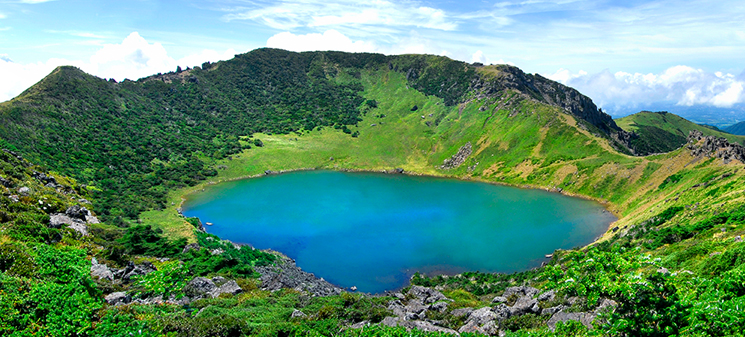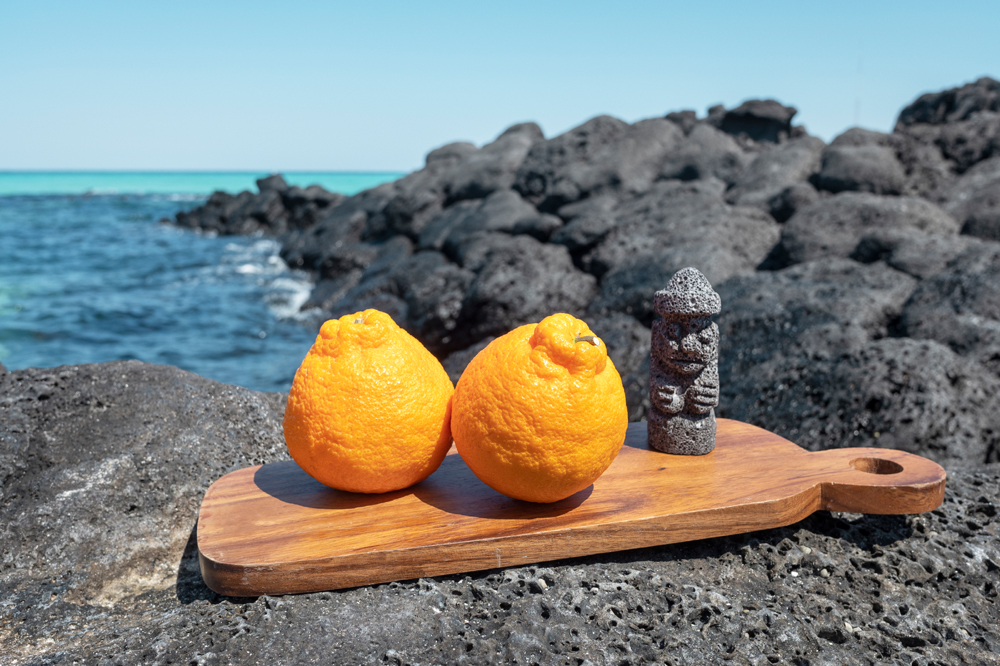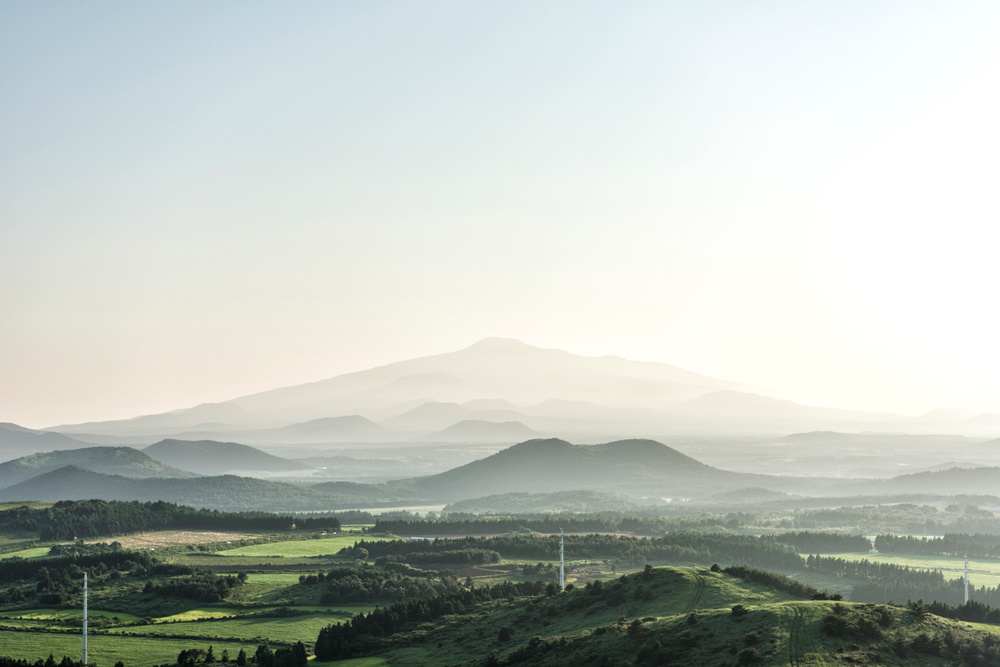The Secrets of Jeju
Everyone on the peninsula is familiar with Jeju-do – Korea’s largest island but smallest province. We are all familiar with Jeju’s dol haleubang (stone statues) and its juicy hallabong (oranges). It is known for its wind and rocks and women. For numerous couples, it was their honeymoon destination. In the minds of many, Jeju is to Korea as Hawaii is to the U.S. But what far fewer people are aware of is the story of its founding or how great a place Jeju is to visit in the wintertime. For this reason, the Gwangju News brings you two articles from its archives: “The Three Founders of Jeju” by Bradley Weiss and Shim Kyu (October 2014) and “An Island in Winter – Jeju in the Cold Season” by Seth Pevey (March 2011). — Ed.
Jeju’s Three Progenitors
On Jeju Island, one can visit a shrine and complex in the heart of Jeju City centered around three holes in the ground, known as Samseonghyeol (삼성혈). According to legend, this is the site where three demigods emerged in the era before the island was inhabited. The three, referred to with the honorific title eulla (을라, “head of clan,”) are known as Go (고/高), Yang (양/梁), and Bu (부/夫), and are also seen as the progenitors of those three family lines, which bear those same three family surnames and remain prominent on the island today. The legend continues that the three lived by hunting and gathering until the arrival one day of a ship to Jeju’s shore. On board were three princesses from the kingdom of Byeongak, who were to be brides for the three demigods. The princesses brought with them cattle and horses as well as five different seeds to help establish agriculture on the island. From that time onward, the three families established Jeju’s Tamna Kingdom and an agrarian way of life.

No solid evidence establishes the time of these legendary events, but they have been conjectured to have coincided with the Three Kingdoms Period on the mainland (57 BC – 668 AD). Other legendary history lends support to the idea, as three brothers – including a certain Go-Hu, also known as Go Deuk-jong – were purported to have been received by the Silla court. They are said to be 15th-generation direct descendants from Go Eulla, and it was at this time that the name “Tamna” was officially recognized for the island.
The title used for the three demigods, eulla, might provide another indication as to the antiquity of the legend. The word comes from the language of the small Buyeo Kingdom, which existed from the 2nd century BC up until 494 AD, pre-dating the beginning of the Three Kingdoms Period.
However, maybe we can draw more significance from the story’s symbolism. The tale seems to be a fairly straightforward allegory, a microcosm of the transition from a hunter-gatherer lifestyle to that of sedentary agriculture, which the vast majority of humanity has undergone since the Neolithic. Note also how the emergence of the three eulla from the earth to marry seaborne women clearly reflects the maritime geography of the island, diverging from the mainland’s more typical identification of men with the sky and women with the earth.
In the end, perhaps the purpose of this legendary history is simply to reflect and justify the position of a few prominent families on the island. If we compare the frequency of the three family names with that of the mainland, we see that even today Go, Yang, and Bu are far more heavily represented on Jeju. Even today, they continue to collectively own and operate the Samseonghyeol shrine, where rites are held every spring and autumn.
Jeju in Winter
Although the two places are quite distinct from one another, Jeju is sometimes referred to by those in the tourism industry as “Korea’s Hawaii.” Folks drawing this parallel may be somewhat guilty of hyperbolizing the beauty and variety of the 1,845 square kilometers of Jeju, yet it is not without its own powerful charms – charms worthy of being lauded simply on their own merit, rather than being wasted in comparison to those of any other locale.
That said, the connection to Hawaii comes, no doubt, from the island’s often tropical weather, its flora, its lushness, and its abundance of honeymoon resorts. The mention of Jeju evokes palm trees waving welcome in the sea breeze, the smell of orange groves enclosed in hand-built basalt walls, and romantic walks by newlyweds through blossoming flowers in their flip-flops. Its reputation as a warm and beautiful paradise is well deserved, yet it may dissuade many from venturing there during the grey-skied snowy season’s tenure. Thus, it was with a stalwart heart and a thick jacket that members of the Gwangju News visited the volcanic island this Lunar New Year [2011].
In legend, three gods emerged in three eggs from three holes in the ground at Samseonghyeol to give birth to the Jeju people. As in the myth, Jeju natives are their own breed – separate in dialect and custom from mainland Koreans. As a foreigner, you can simply toss aside all those Korean lessons you took or those Rosetta Stone sessions you hammered out: Jeju mal is as distinct and original a local tongue as any far-flung English dialect. Just as two people from Mobile, Alabama, and Manchester, England, may find it hard to communicate properly, Koreans from Seoul to Busan find it difficult to understand the thick island-speak of Jeju.

The trip was led by a hiking club called “Korea’s International Outdoor Recreation and Tour Group,” which took multiple sojourns to Jeju yearly, along with visits to the various mountain tops dotting the landscape of mainland Korea. The pittance they charged (300,000 won) covered airfare, accommodation, and six meals over the weekend, making it a bargain-bin jewel of a jaunt.
The weather was a refreshing change. As Gwangju’s streets and alleyways remained permafrosted in the black-soot ice of our recent snows, the premature but welcome smells of spring that warm Jeju in this bleak season created an appealing atmosphere for hiking, which was the happy order of the day. Starting slow, our group made several constitutionals across Jeju’s various Olle Trails. No problems here: a simple stroll through the countryside, skipping across stone-strewn beaches, and traversing the seaside highways dotted with quiet and somber coastal villages where the smells of freshly caught fish pervaded every wind. An enjoyable experience by anyone’s reckoning.

The main event, so to speak, was Mt. Halla, which is quite a different animal. A grueling hike of some 20 kilometers rewards those strong enough for the journey with a beautiful crater and the right to boast of conquering the Republic of Korea’s loftiest peak, no mean feat. In all honesty, and as painful as it is to admit in such permanent and damning ink, no Gwangju News member was among those who made it to the summit! However, another group member described the trip to the top: “The first thing I did when I got to the top was look back in the direction I had climbed to get a better view of the scenery I had seen as I ascended. Then I turned around, took a few steps forward and was awestruck by the sight of the crater in front of me. It looked immense and, being the first proper volcanic crater I’ve seen, was somewhat surreal. It was so spherical it looked more like a huge meteorite-impact crater than a volcano. The trees inside the crater added a sense of scale as they looked so tiny they could have been mistaken for patches of moss.”
In addition to the Mt. Halla climb, there were also other small day trips to the ginseng farms, to a traditional Jeju village, and to a Buddhist temple. Consider a wintertime trip to Jeju. From the three holes of Samseonghyeol to the crater peak of Mt. Halla, it is a travel destination you are sure to enjoy.
Arranged by David Shaffer.





